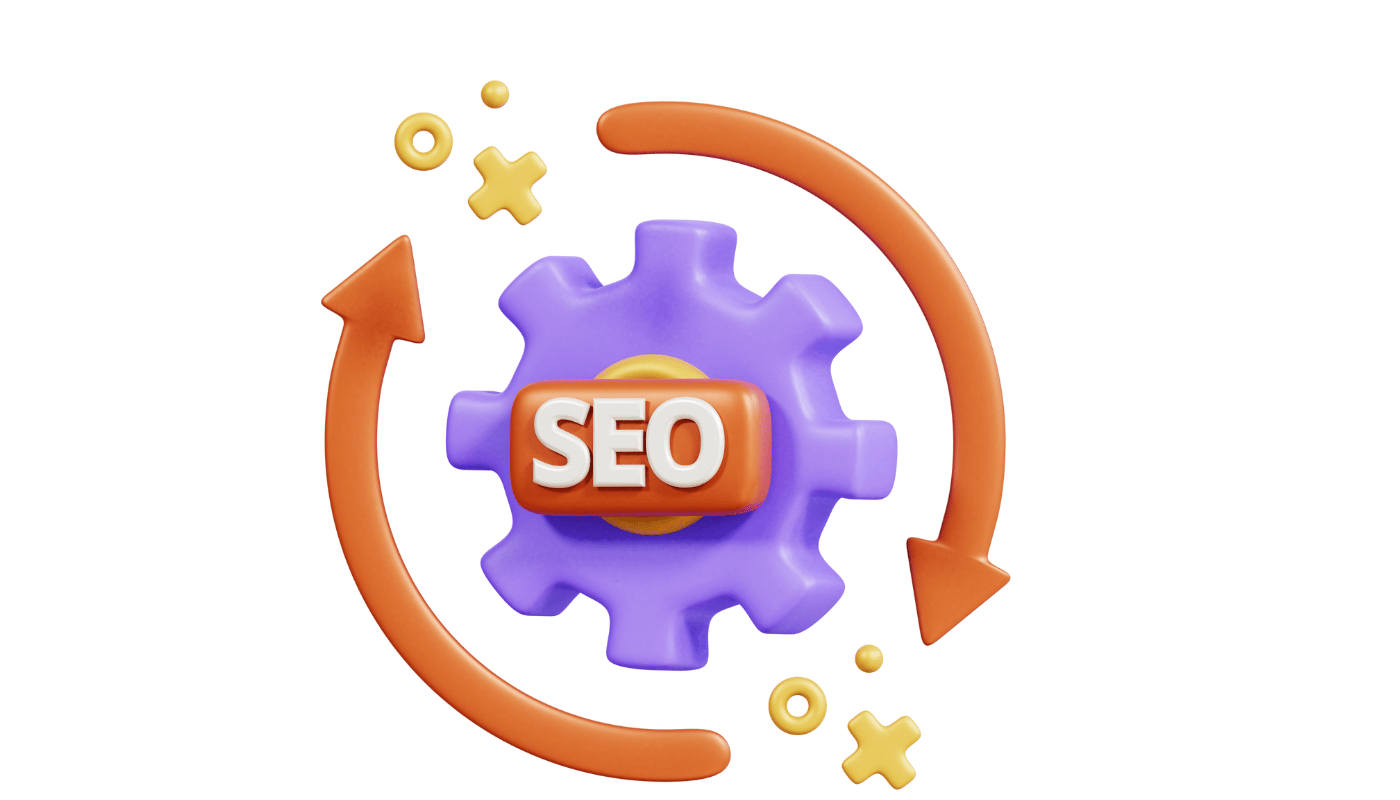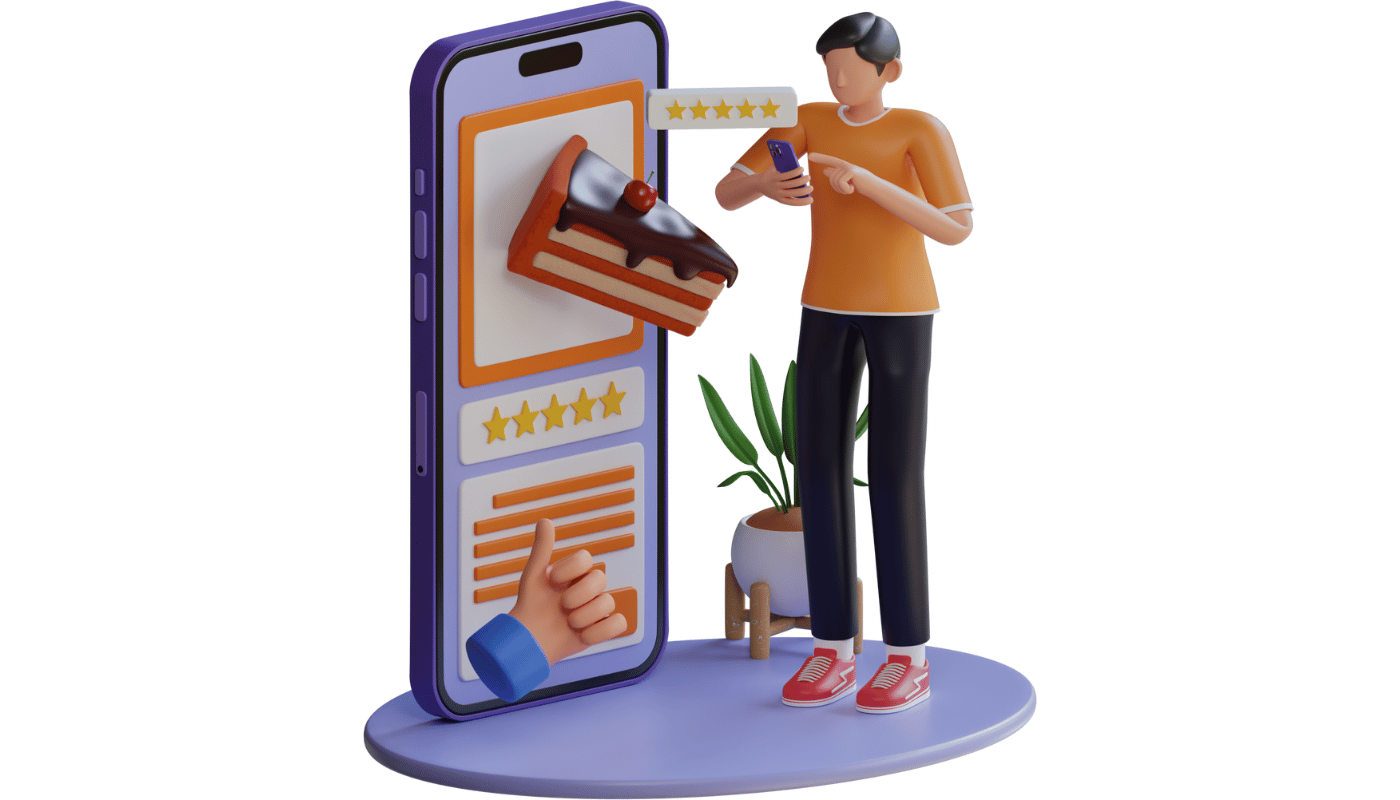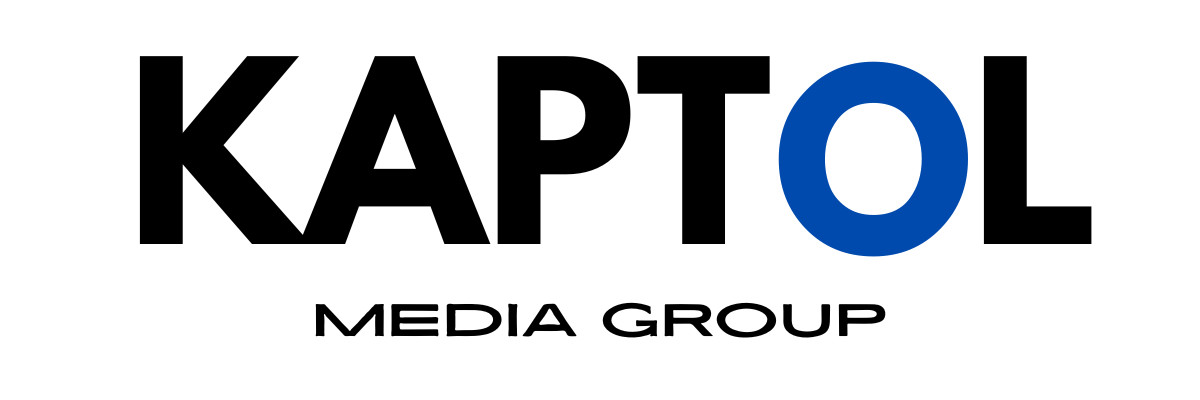#1 Most Important Part Of Your Campaign
The Central Role of Content in Digital Marketing

1.Content as the Foundation of Engagement:
Building Relationships
Building strong relationships through content is a pivotal aspect of effective digital marketing.
This approach not only enhances brand loyalty but also drives engagement across various platforms.
Here's a look into how different types of content can be used to build and sustain these vital relationships:
Blog Posts
- Personalisation and Relevance: Regular blog posts that address the specific concerns, challenges, and interests of your audience can create a sense of understanding and trust. Tailoring content to the needs of your audience shows that your brand pays attention and cares about their concerns.
- Expertise and Authority: Blogs are an excellent platform for sharing detailed insights, advice, and research findings. By consistently providing valuable content, you position your brand as an industry leader and a go-to resource.
Videos
- Engagement and Emotional Connection: Videos have the power to engage audiences on an emotional level. Whether it's a behind-the-scenes look at your company, customer testimonials, or educational content, videos bring a human touch to digital interactions, making your brand more relatable and trustworthy.
- Accessibility and Reach: Videos can reach and resonate with a broad audience, including those who prefer visual and auditory learning styles. They are also highly shareable across social media, further extending your reach.
Podcasts
- Ongoing Engagement: Podcasts create a unique, intimate form of engagement. Regular episodes invite listeners to tune in consistently, forming a habit and a direct connection with your brand over time.
- Diverse Discussions: Hosting guests from various fields or discussing different topics can broaden the appeal of your podcasts. This not only diversifies your content but also attracts a wider audience base, fostering a community around shared interests.
Social Media Updates
- Immediate and Responsive Communication: Social media allows for real-time interaction with your audience. Posts, stories, and updates can be used to respond quickly to trends, audience queries, and feedback, making your brand feel more accessible and attentive.
- Community Building: Through consistent and interactive posts, live sessions, and community engagements, social media is perfect for building a sense of community. This platform allows your followers to not just interact with you but also with each other, enhancing the social aspect of your brand.
Strategies for Effective Relationship Building Through Content
Consistent Voice and Brand Persona:
- Develop and maintain a consistent voice and persona across all content. This consistency helps build a recognisable brand identity that your audience can relate to over time.
Interactive and Engaging Elements:
- Include interactive elements such as quizzes, surveys, and contests to encourage active participation from your audience. Engagement isn't just about consumption; it's about interaction.
Feedback and Adaptation:
- Actively seek out and listen to feedback from your audience. Use this feedback to adapt and refine your content strategy. This not only improves your content but also shows your audience that their opinions are valued and impactful.
Value and Utility:
- Always aim to provide value, whether through informative, educational, or entertaining content. When your audience finds real value in your content, they are more likely to stay engaged and loyal.
By focusing on these aspects of content creation, you can effectively build and maintain strong relationships with your audience, which are essential for long-term success in digital marketing.
Driving Engagement
Driving engagement through quality content involves more than just capturing attention; it's about creating an experience that resonates with your audience on an emotional or intellectual level. This type of engagement is crucial for building brand loyalty and motivating your audience to share your content, which naturally amplifies your reach. Here’s a breakdown of how you can craft content that truly engages:
Emotional Connection
- Storytelling: One of the most powerful ways to connect with your audience is through storytelling. Stories can convey the personality of your brand, share customer successes, or communicate the journey of your products. By telling stories that evoke emotions—be it happiness, empathy, inspiration, or even outrage—you make your content memorable and relatable.
- Visuals and Aesthetics: The visual aspect of your content can have a profound impact on emotional engagement. Using striking images, cohesive color schemes, and thoughtful layouts can draw viewers in and create a lasting impression. This is particularly effective in videos and social media, where visuals play a central role.
Intellectual Stimulation
- Educational Content: Providing content that educates or offers valuable insights can captivate an intellectually curious audience. This can include how-to guides, webinars, infographics, and detailed blog posts that help your audience understand complex topics or learn new skills.
- Thought Leadership: Publishing content that offers unique perspectives or innovative ideas positions your brand as a thought leader in your industry. This not only stimulates your audience intellectually but also builds trust in your brand’s expertise.
Interactive Elements
- User Participation: Encourage user participation through interactive content like polls, quizzes, and interactive videos. These elements require active engagement from the audience, making the content experience more engaging and personalized.
- User-Generated Content: Invite your audience to contribute their own content, such as photos, videos, or testimonials. This not only increases engagement but also strengthens community ties, as users see real people using and endorsing your brand.
Consistency and Relevance
- Regular Updates: Consistent content delivery keeps your audience engaged over time. Regular updates keep your brand fresh in the minds of your consumers and can help establish a routine check-in with your content, such as weekly blog posts or daily social media updates.
- Tailored Content: Use data and analytics to understand what types of content resonate most with your audience. Tailoring your content to meet the preferences and interests of your audience increases relevance and engagement.
Encouraging Social Sharing
- Shareability Features: Make it easy for your audience to share your content by including share buttons and ensuring that your content looks appealing when shared on social platforms. Consider the aesthetics of how your posts appear when shared, including titles, images, and lead-in text.
- Incentives for Sharing: Sometimes, a little incentive can go a long way. Offer rewards, recognition, or exclusive content to users who share your content frequently. This can turn casual viewers into active promoters of your brand.
By focusing on these elements, your content will not only engage your audience deeply but will also encourage them to share their experiences with others. This organic expansion of reach is invaluable for increasing visibility and strengthening your brand’s presence in a crowded marketplace.
2. Content Fuels SEO:
Search Engine Visibility
Search engine visibility is critical for any digital marketing strategy, as it determines how easily potential customers can find your website when they use search engines like Google. Optimising your content with relevant keywords and ensuring it's high-quality and fresh are key tactics to improve your search engine rankings.
Here’s an in-depth exploration of how this works and strategies to enhance your visibility:
1. Keyword Optimisation
- Research and Use Relevant Keywords: Begin with thorough keyword research to understand what your target audience is searching for related to your products, services, or industry. Tools like Google Keyword Planner, Ahrefs, or SEMrush can help identify both high-volume keywords and long-tail phrases that have less competition.
- Strategic Placement: Once you have your keywords, integrate them strategically into your content. This includes placing them in titles, headers, the body of the text, meta descriptions, and URLs. The key is to use keywords naturally and contextually to avoid overstuffing, which can negatively impact your search rankings.
2. Content Quality
- Value and Depth: Search engines favour content that provides real value to readers. This means creating content that is not only informative but also detailed and well-researched. Comprehensive articles that cover topics thoroughly tend to rank higher than superficial content.
- Engagement Metrics: High-quality content also improves engagement metrics like time on site, bounce rate, and click-through rate, which are important for SEO. Engaging content encourages visitors to stay longer on your website, reducing bounce rates and increasing the chances of conversions.
3. Freshness of Content
- Regular Updates: Search engines give preference to websites that frequently update their content. Regularly posting new articles, blogs, or updating existing pages signals to search engines that your website is active and relevant.
- Updating Old Content: Refreshing old content with new information, additional content, and updated keywords can also boost your rankings. This not only improves the freshness score but also leverages existing page authority to gain better visibility.
4. Technical SEO
- Website Structure: Ensure that your website has a clear, logical structure that search engines can easily crawl. This includes having a robust internal linking strategy that helps search engines discover new pages and understand the relationship between different parts of your website.
- Mobile Optimisation: With the increasing use of mobile devices, having a mobile-friendly website is crucial for SEO. Mobile optimization affects not only user experience but also rankings in mobile search results.
5. Content Formats and Rich Media
- Diverse Content Types: Incorporating various types of content such as videos, infographics, and images can help capture a wider audience and keep them engaged longer. Additionally, these elements can be optimized for SEO with proper tagging and descriptions.
- Schema Markup: Using schema markup (or structured data) helps search engines understand the content of your pages better and provides rich snippets in search results, which can improve click-through rates.
6. Backlinks
- Quality Over Quantity: Focus on earning high-quality backlinks from reputable sites within your industry. Backlinks are a strong ranking factor because they signal to search engines that other websites consider your content valuable and trustworthy.
By focusing on these strategies, you can enhance your search engine visibility, making it easier for potential customers to find you. High rankings in search results not only increase traffic but also improve the credibility and authority of your brand in the digital space.
Backlinking
Backlinking is a fundamental component of search engine optimisation (SEO).
Backlinks, also known as inbound links or external links, are links from one website to another. When your content receives backlinks from reputable and authoritative sites, it sends strong signals to search engines that your content is credible and valuable, thereby enhancing your SEO. Here’s a closer look at why backlinks are so powerful and how you can effectively earn them:
1. The Importance of Backlinks
- Authority and Trust: Search engines use backlinks as indicators of the trustworthiness and authority of a website. A backlink from a high-authority site acts like a vote of confidence, suggesting that the content is reputable.
- Relevance: Backlinks from sites within the same or related industries are particularly valuable because they signal to search engines the relevance of your content to your niche, which can boost your rankings in search results.
2. Strategies for Earning Quality Backlinks
- Create High-Quality Content: The foundation of earning backlinks is to produce high-quality, engaging, and informative content that naturally attracts other websites to link to it. This can include comprehensive guides, original research, case studies, or content that covers trending topics within your industry.
- Guest Blogging: Writing articles for other reputable blogs in your industry can help you gain backlinks. By contributing to other sites, you not only get a backlink but also establish relationships with peers in your industry.
- Resource Link Building: Identify high-authority websites that link to resources similar to what you offer and suggest your content as an additional or superior resource. This method often involves reaching out to webmasters or content editors.
- Broken Link Building: This involves finding broken links on other websites and offering your content as a replacement. Tools like Ahrefs or SEMrush can help you find such opportunities.
3. Using Content Formats That Attract Backlinks
- Data-Driven Content: Content that includes original data and statistics is highly linkable because it provides value that other sites might want to cite in their own content.
- Infographics and Visual Data: Visual content like infographics can simplify complex information and make it easily shareable. Such content often gets backlinks because it enhances the comprehensibility and appeal of other articles.
- Videos and Webinars: Similarly, creating high-quality videos or hosting webinars can attract backlinks if other sites embed your content or link back to it as a useful resource.
4. Promoting Content to Earn Backlinks
- Social Media Sharing: Actively sharing your content on social media platforms can increase its visibility, which in turn can lead to more backlinks as more people discover it.
- Email Outreach: Direct outreach to influencers, industry bloggers, and websites that may find your content valuable can help in earning backlinks. It's important to be respectful and concise in your communication and to show how linking to your content provides value to their audience.
5. Maintaining Backlink Health
- Monitor Backlinks: Use tools like Google Search Console, Ahrefs, or Moz to monitor your backlinks. This helps in understanding which content is performing well and can also alert you to any potentially harmful links that might impact your SEO negatively.
- Disavow Bad Links: If you identify any toxic or spammy backlinks, you can use Google’s Disavow Tool to tell Google to ignore these links in assessing your site, protecting your site’s reputation and SEO.
Backlinking is not just about increasing the number of links but focusing on the quality and relevance of those links. A strategic approach to backlinking, centered around creating valuable content and engaging with the community, can significantly enhance your search engine visibility and credibility.
3. Content Supports Other Marketing Channels:
Social Media
Social media plays a pivotal role in the digital marketing ecosystem by amplifying content reach, engaging diverse audiences, and driving significant traffic back to a brand's main website.
Effective use of social media not only enhances visibility but also provides opportunities for deeper audience engagement and conversion.
Let's look at how social media can be leveraged to maximise the impact of your content:
1. Content Distribution and Visibility
- Broad Reach: Social media platforms like Facebook, Instagram, Twitter, LinkedIn, and Pinterest offer access to diverse and large audiences. Sharing content on these platforms can significantly expand your reach beyond your existing customer base.
- Targeted Sharing: Most social media platforms offer advanced targeting tools that allow you to tailor your content distribution to specific demographics, geographic regions, and interest groups. This ensures that your content is seen by the most relevant audience, increasing the likelihood of engagement and click-throughs.
2. Driving Traffic to Your Website
- Call-to-Action (CTA): Effective social media posts often include a clear CTA such as "Learn more," "Visit our site," or "Read the full article." These prompts encourage users to take action and visit your website, thereby increasing traffic and the potential for conversions.
- Link Integration: Including direct links in your posts, or in your bio on platforms like Instagram, makes it easy for users to navigate to your website. For platforms that do not allow direct links in posts, tools like link-in-bio services can be utilized.
3. Engagement and Interaction
- Conversational Content: Social media is inherently interactive. Posts that invite comments, questions, or opinions tend to perform better in terms of engagement. Engaging directly with commenters can also foster a sense of community and loyalty around your brand.
- Live Features: Using live video features on platforms like Facebook, Instagram, and Twitter can create real-time engagement opportunities. Live sessions are ideal for product launches, Q&As, and behind-the-scenes glimpses, making your brand feel more accessible and transparent.
4. Content Optimisation for Social Media
- Visual Appeal: Content that is visually appealing tends to have higher engagement rates on social media. This includes well-designed images, eye-catching graphics, and engaging video content.
- Adaptation for Platforms: Tailor your content to fit the norms and strengths of each platform. For example, shorter, catchier posts might work better on Twitter, while longer, story-driven posts can be more effective on Facebook. Instagram and Pinterest are highly visual, so high-quality images and infographics are essential here.
5. Measurement and Analytics
- Tracking Performance: Utilise social media analytics tools to track the performance of your content. Metrics such as likes, shares, comments, and most importantly, click-through rates to your website, are vital for understanding what types of content resonate with your audience.
- Refining Strategies: By analysing the data, you can refine your social media strategy. Understand which types of content perform best on which platforms and at what times, allowing for more strategic posting schedules and content creation.
6. Encouraging Social Sharing
- Shareable Content: Create content that is inherently shareable. This includes content that is informative, highly relatable, or emotionally resonant. Encouraging users to share your posts in their networks can exponentially increase your content’s reach.
- Incentives for Sharing: Sometimes, offering incentives like giveaways or contests can increase sharing activity. For instance, entries can be earned by sharing the post or tagging friends, which helps extend your content's visibility and engagement.
By strategically using social media as a conduit for your content, you not only drive more traffic to your website but also build a dynamic, engaged community around your brand.
This multi-layered approach not only boosts your digital presence but also enhances your brand’s overall appeal and accessibility.
Email marketing remains a highly effective tool in the digital marketer’s toolkit, offering direct communication with your audience through personalised content. By repurposing your content into newsletters, exclusive offers, and more, you can keep your audience engaged, nurture leads, and drive repeat traffic to your site.
Here’s how to maximise the potential of email marketing:
1. Repurposing Content into Newsletters
- Curated Content: Create newsletters that aggregate your best or most relevant content. This could be a weekly roundup of blog posts, a compilation of the most popular articles of the month, or a series of pieces tied to a specific theme.
- Educational Content: Transform informative blog posts or articles into educational series that can be delivered over email. These can help educate your customers about your products or services, and provide valuable, actionable insights.
2. Exclusive Offers and Promotions
- Subscriber Specials: Encourage sign-ups and reward loyalty by offering exclusive promotions or discounts to your email subscribers. This not only incentivises new subscribers but also helps retain existing ones.
- Early Access: Give your email subscribers early access to special sales, new products, or events. This creates a sense of exclusivity and privilege among your email audience.
3. Engagement and Personalization
- Segmentation: Use segmentation to tailor your emails based on user behavior, preferences, and past interactions. Personalised emails are more likely to be opened and acted upon than generic blasts.
- Interactive Elements: Include interactive elements like polls, surveys, or clickable content within emails to increase engagement rates. This interaction not only provides you with valuable feedback but also keeps users interested and involved.
4. Driving Repeat Visits to Your Site
- Content Teasers: Include teasers of your content in the emails with a 'Read More' link that directs them to your website to read the full article. This can significantly increase site traffic and page views.
- Continuous Series: Create a series of related content pieces that unfold over several emails, encouraging subscribers to follow along and repeatedly visit your website for more information.
5. Integrating with Content Strategy
- Content Calendar: Align your email marketing schedule with your content calendar. This ensures that your emails are timely and relevant, and that they complement other content being released on your platforms.
- Feedback Loop: Use the insights gained from email interactions to inform your broader content strategy. Understanding which topics resonate with your audience can help tailor future content across all channels.
6. Measurement and Optimisation
- A/B Testing: Regularly use A/B testing for your emails to test different subject lines, content formats, and images to see what works best with your audience.
- Analytics: Monitor key performance indicators such as open rates, click-through rates, and conversion rates to measure the effectiveness of your email campaigns and adjust strategies accordingly.
7. Compliance and Best Practices
- Compliance with Regulations: Ensure that your email practices comply with relevant laws such as the GDPR or the CAN-SPAM Act, which govern email communication and user privacy.
- Unsubscribe Options: Always provide a clear and easy way for subscribers to opt-out of your emails. This not only respects the user’s preferences but also helps maintain a cleaner, more engaged subscriber list.
By effectively leveraging email marketing and integrating it with your content strategy, you can maintain a strong connection with your audience, foster loyalty, and drive sustained traffic to your website.
This holistic approach ensures that each email not only serves its immediate marketing purpose but also contributes to the overarching goals of your digital marketing efforts.
Paid Advertising
Paid advertising campaigns are an integral part of a comprehensive digital marketing strategy, effectively complementing organic efforts by targeting specific audiences with precision and scale. Content plays a critical role in these campaigns, from shaping the ad copy to designing landing pages and creating compelling lead magnets. Here’s how content drives the success of paid campaigns:
1. Ad Copy Creation
- Relevant Messaging: Effective ad copy is rooted in understanding the needs and desires of your target audience. The content should speak directly to their pain points, aspirations, or curiosities, making the ad relevant and engaging.
- A/B Testing: Experiment with different versions of your ad copy to see what resonates best with your audience. A/B testing can reveal the most effective phrases, calls to action (CTAs), and value propositions that drive higher conversion rates.
2. Landing Pages
- Consistency in Messaging: The content on your landing pages must align with the messages in your ad copy. Consistency reassures visitors that they've come to the right place and helps smoothly transition them from the ad to your website.
- Focused Content: Landing pages should be focused and clear, with content that encourages action. Avoid clutter and distractions; every piece of content should support the goal of converting visitors, whether that's filling out a form, making a purchase, or another specific action.
3. Lead Magnets
- Value-Driven Content: Lead magnets such as ebooks, white papers, free trials, or webinars offer significant value in exchange for contact information. The content of these offerings should be compelling enough to justify the exchange and be directly relevant to the interests of the target audience.
- Segmentation and Personalisation: Tailor lead magnets to different segments of your audience based on their interests and where they are in the buying cycle. Personalised content increases the likelihood of conversion as it resonates more deeply with potential customers.
4. Content and User Experience
- Visual and Textual Harmony: The visual elements of your ads and landing pages should work seamlessly with the textual content to create a user-friendly experience. Good design can enhance the readability and impact of your content, increasing the effectiveness of your campaigns.
- Mobile Optimization: Since a significant portion of online traffic comes from mobile devices, ensure that your content, especially on landing pages and in lead magnets, is optimised for a smooth mobile experience.
5. Tracking and Analytics
- Performance Measurement: Use analytics to track the performance of your paid campaigns. Look at metrics such as click-through rates, conversion rates, and cost per acquisition to measure the effectiveness of your content and overall campaign strategy.
- Iterative Improvement: Use the data gathered from your campaigns to refine and improve your content continuously. Insights from performance metrics can guide adjustments in ad copy, design, and content offerings.
6. Integration with Overall Marketing Strategy
- Holistic Approach: Ensure that your paid campaigns are integrated with your broader marketing strategy. This includes aligning your content across all channels and stages of the customer journey to maintain a coherent and unified message.
- Leveraging Insights: Insights gained from paid campaigns can provide valuable data that can be used to enhance other areas of your marketing strategy, including organic content creation, social media marketing, and more.
By carefully crafting content for paid campaigns and constantly optimising based on performance data, marketers can significantly enhance the effectiveness of their advertising efforts.
This approach not only improves immediate campaign outcomes but also contributes to long-term brand growth and customer engagement.
Prioritising Content Creation
Quality over Quantity
Prioritising high-quality content over sheer quantity is a strategic approach that yields significant long-term benefits in digital marketing.
This focus on quality enhances engagement, builds trust with your audience, and strengthens your brand’s reputation.
Here’s why quality trumps quantity and how to ensure your content meets high standards.
1. Understanding Quality Content
- Relevance and Resonance: Quality content must be highly relevant to your audience, addressing their interests, challenges, and needs. It should resonate on a personal or professional level, offering solutions or enriching their knowledge and experience.
- Research and Depth: Well-researched content that provides new insights or comprehensive information on a topic is more valuable to readers. This involves going beyond superficial explanations to deliver in-depth analysis or unique perspectives that aren't readily available elsewhere.
2. Benefits of High-Quality Content
- Increased Engagement: Content that is informative, entertaining, and useful naturally engages readers, viewers, or listeners. High engagement rates lead to longer dwell times on your website, which can positively influence search engine rankings.
- Enhanced Shareability: People share content that they find impactful, helpful, or emotionally engaging. High-quality content is more likely to be shared across social media platforms, extending its reach and increasing your brand visibility organically.
- Building Trust and Authority: By consistently providing high-quality content, you establish your brand as an authoritative source in your field. This trust is crucial for converting readers into customers and for retaining existing customers.
3. Strategies for Prioritizing Quality
- Invest in Expertise: Whether it's hiring skilled writers, engaging subject matter experts, or investing in ongoing training for your content team, ensuring that the people creating your content have the right skills and knowledge is essential.
- Allocate Sufficient Time: High-quality content creation cannot be rushed. Allocate adequate time for research, writing, editing, and revisions. The process should not be hurried to meet unrealistic production targets.
- Feedback and Revisions: Implement a robust process for feedback and revisions. Content should be regularly reviewed and critiqued by peers or editors to maintain high standards.
4. Quality Control Measures
- Editorial Guidelines: Develop comprehensive editorial guidelines that define your brand’s voice, style, and quality standards. These guidelines ensure consistency across all content, which is key to building a recognisable brand.
- Use of Analytics: Leverage analytics to measure the performance of your content. Look at metrics such as page views, bounce rates, and social shares to understand what works and refine your approach accordingly.
- Audience Feedback: Regularly gather and analyse feedback from your audience. This can be done through comments, surveys, or social media interactions. Audience input is invaluable for understanding the impact of your content and for making necessary adjustments.
5. Balancing Quality with Quantity
- Strategic Content Planning: While quality should be the priority, the frequency of content publication still matters. Create a content calendar that balances regular updates with the need to maintain high-quality output.
- Repurposing Content: Maximise the value of your high-quality content by repurposing it into different formats. For example, a detailed report can be turned into an infographic, a series of blog posts, or even a webinar.
6. Impact on SEO and Digital Marketing
- SEO Benefits: Search engines favor high-quality, engaging content. Well-crafted content is more likely to earn backlinks and rank higher in search results, driving organic traffic to your site.
- Long-Term Value: Quality content has a longer shelf life. A well-written and informative article can continue to attract visitors for years, providing ongoing returns on the initial investment.
By prioritising the creation of high-quality content, you not only enhance user engagement and brand perception but also solidify your long-term marketing and SEO success.
This approach ensures that each piece of content you produce contributes positively to your overall business goals.
Consistency is Key
Consistency in content creation is crucial for maintaining audience engagement and improving your brand’s visibility and SEO performance.
Regularly publishing content keeps your brand fresh in the minds of your audience and establishes a reliable presence that can foster trust and loyalty.
Let’s look at the benefits and strategies of consistent content creation:
1. Benefits of Consistent Content Creation
- Audience Retention: Regular content updates give your audience a reason to return to your website or social media profiles frequently. This repeated engagement helps to strengthen their connection with your brand.
- Brand Recognition: Consistency helps in building a strong brand identity. When your content is consistent in style, tone, and timing, your audience begins to recognize and expect your brand's communications, reinforcing brand recall.
- Improved SEO Rankings: Search engines favor websites that are regularly updated with fresh content. Consistency in posting new content signals to search engines that your site is active and relevant, which can boost your rankings.
- Predictability for Users: Having a consistent schedule lets your audience know when to expect new content, which can make them more likely to engage with it as soon as it’s published.
2. Strategies for Achieving Consistency
- Content Calendar: Create and adhere to a content calendar. This helps in planning out your content in advance, ensuring that you maintain a steady flow of content across all your platforms.
- Content Themes: Develop themes or content buckets that you can rotate through to keep your content varied yet consistent. This approach can help in managing the creative process and in ensuring a balanced coverage of all key topics relevant to your audience.
- Automated Scheduling Tools: Utilise tools like Buffer, Hootsuite, or CoSchedule for scheduling posts in advance. These tools can help maintain your presence on social media and other platforms, even during busy periods or when you are not immediately available to post manually.
3. Maintaining Quality with Consistency
- Resource Allocation: Ensure that you have adequate resources to maintain content quality. This might mean hiring additional writers, using freelance content creators, or investing in training for your existing team to streamline the content creation process.
- Quality Checks: Implement regular quality checks and reviews to ensure that the rush to maintain consistency does not compromise the quality of the content being produced.
- Feedback Incorporation: Regularly collect and analyse feedback from your audience about the content’s relevance and quality. Use this feedback to adjust your content strategy and schedule as needed.
4. Measuring the Impact of Consistency
- Engagement Metrics: Monitor engagement metrics such as likes, shares, comments, and page views to gauge how consistently posting content affects audience interaction.
- SEO Performance: Track changes in your SEO performance, such as keyword rankings and organic traffic, to see how consistency impacts your visibility on search engines.
- Conversion Metrics: Observe how consistent content posting influences conversions and sales. This is particularly important if content marketing is a direct driver of your business outcomes.
5. Flexibility Within Consistency
- Adaptability: While it’s important to be consistent, it’s equally vital to remain flexible and responsive to changes in your industry or major trends. This can mean adjusting your content calendar as needed to address current events or shifting audience interests.
- Iterative Improvement: Use consistent content creation as an opportunity for iterative improvement. Each piece of content is an opportunity to learn what works best and refine your approach.
In essence, consistency in content creation isn’t just about posting regularly—it’s about forming a dependable, engaging presence that your audience can trust.
Achieving this consistency supports your marketing objectives, strengthens your brand, and enhances your strategic outcomes, particularly in SEO and audience engagement.
Diverse Formats
Diversifying content formats is a strategic approach that can significantly enhance the reach and effectiveness of your digital marketing efforts.
By leveraging various content types such as text, video, infographics, and podcasts, you can cater to the diverse preferences of your audience and engage them in multiple ways.
Here’s how diversifying content formats can benefit your marketing strategy and the best practices for implementing this approach:
1. Benefits of Content Format Diversification
- Broader Audience Appeal: Different segments of your audience may prefer different types of content. For example, some people learn best visually, making videos and infographics particularly appealing, while others prefer the in-depth analysis that can be conveyed through text or the convenience of listening to podcasts.
- Increased Engagement: Different formats can provoke different engagement levels. Videos may elicit quick responses or social shares, text might encourage deeper thought and discussion, and infographics are often used to simplify complex data, making it easily digestible and shareable.
- Enhanced SEO: Diverse content types can contribute to a stronger SEO strategy. Search engines favour websites that offer rich media content such as videos, images, and podcasts because these can improve user engagement metrics and provide backlink opportunities.
2. Implementing a Multi-Format Content Strategy
- Understand Your Audience: Start with audience research to determine what types of content your target customers prefer and how they consume this content. Analytics tools can provide insights into user behaviour and content preferences.
- Create a Content Plan: Plan your content strategy to include a variety of formats that will engage different audience segments. This plan should outline what types of content will be developed, how often, and tailored to which audience segments.
- Leverage Strengths of Each Format:
- Text: Blogs, articles, and e-books are excellent for SEO and providing detailed information.
- Video: Ideal for demonstrations, storytelling, and capturing attention quickly. Platforms like YouTube also help in reaching larger audiences.
- Infographics: Great for data presentation and viral content. Useful on platforms like Pinterest or for enhancing blog posts.
- Podcasts: Serve an audience that may prefer consuming content during commutes or while multitasking.
3. Best Practices for Content Diversification
- Consistent Quality Across Formats: Ensure that all types of content meet high-quality standards. Poor quality in one format can detract from the overall brand perception.
- Cross-Promote Content: Use different content types to promote each other. For example, a podcast episode could promote an in-depth blog post on the same topic, or a video could direct viewers to an infographic.
- Repurpose Content: To maximise efficiency, repurpose content across formats. A blog post can be turned into a video script, which can then be summarised in an infographic, or discussed in more detail in a podcast.
- Feedback and Adaptation: Continuously gather feedback on each type of content and adapt your strategy based on what is most effective. Audience preferences can change, and staying responsive is key.
4. Measurement and Analysis
- Track Engagement: Monitor how each content type performs in terms of engagement metrics like views, shares, comments, and time spent on page.
- Analyse Conversion Rates: Evaluate how well each content type converts visitors into leads or customers. This will help you understand which formats are most effective at driving business goals.
- Adjust Investments: Based on performance data, adjust how much time and resources are allocated to each type of content. Invest more in the formats that deliver the best results.
Diversifying the formats of your content not only enhances your reach and engagement but also strengthens your brand’s presence across different platforms and among various segments of your audience.
This strategic diversity can lead to a more robust, resilient, and successful digital marketing effort.
Strategic Content Integration
Integrating your content strategy with your overall marketing and business goals is crucial for ensuring that each piece of content serves a strategic purpose and contributes directly to your business objectives.
This alignment helps in maximising the impact of your content and ensuring that your marketing efforts are cohesive and directed towards common end-goals.
Here’s how to effectively integrate your content strategy with your broader marketing goals:
1. Define Clear Business Objectives
- Identify Key Goals: Start by clearly defining what your business aims to achieve. These goals could include increasing brand awareness, driving sales, enhancing customer loyalty, or expanding into new markets.
- Prioritize Objectives: Not all goals are of equal priority at any given time. Prioritise your objectives based on your business needs, market conditions, and available resources.
2. Align Content with Business Objectives
- Content for Brand Awareness: If the objective is to increase brand awareness, focus on creating and distributing content that is shareable and highly visible. This might include viral videos, engaging infographics, or insightful blog posts that can draw attention from a broad audience.
- Content for Driving Sales: For goals oriented around driving sales, your content should be more conversion-focused. This includes product demonstrations, customer testimonials, and detailed case studies that provide proof of value and encourage purchase decisions.
- Content for Customer Loyalty: To enhance customer loyalty, develop content that adds value post-purchase, such as how-to guides, user tips, and community-building activities that enhance the user experience and foster a sense of belonging.
- Content for Market Expansion: When entering new markets, create content that addresses local concerns, customs, and languages. Tailoring content to meet the specific needs and cultural expectations of a new market can facilitate smoother entry and quicker acceptance.
3. Map Content to the Customer Journey
- Awareness Stage: At this stage, potential customers are just beginning to recognize their needs. Content should aim to educate and inform, positioning your brand as a helpful resource.
- Consideration Stage: Here, customers are evaluating their options. Content should demonstrate your brand’s value proposition clearly and differentiate your offerings from competitors.
- Decision Stage: Content that aids decision making, such as detailed comparisons, pricing guides, and compelling calls-to-action, is crucial for converting prospects into customers.
4. Measure and Adjust
- Set Key Performance Indicators (KPIs): Establish KPIs that relate directly to your business objectives for each type of content. For instance, if the goal is brand awareness, relevant KPIs might include social shares, page views, and media mentions.
- Regular Review and Optimisation: Continuously monitor the performance of your content against these KPIs. Use analytics tools to gather data and make informed decisions about what content is working and what needs adjustment.
5. Cross-Department Collaboration
- Engage Stakeholders: Ensure that different departments (e.g., sales, customer service, product development) are involved in the content strategy. This can provide diverse insights and ensure that content serves broader organisational needs.
- Unified Messaging: Maintain consistent messaging across all channels and departments. This unified approach reinforces your brand message and helps avoid confusion among your audience.
6. Leverage Feedback Loops
- Gather Customer Feedback: Regularly solicit feedback from your audience regarding the content you produce. Understanding their responses can help you fine-tune your strategy to better meet their needs.
- Internal Feedback: Encourage feedback from internal teams that interact with customers. Insights from sales or customer service can provide valuable direction for content that addresses real customer issues.
Integrating your content strategy with your overall marketing goals ensures that each piece of content not only attracts attention but also drives meaningful business outcomes. This strategic alignment enhances the effectiveness of your marketing efforts, ensuring that they contribute directly to the success of your business.
In summary, while money and budgeting are important to fuel your campaigns, content truly is the king in digital marketing.
It’s not just about creating content but making it relevant, engaging, and integrated with your overall marketing strategy.
With Kaptol Media’s expertise, your campaign can harness the full power of top-tier content to achieve significant online visibility and engagement.









